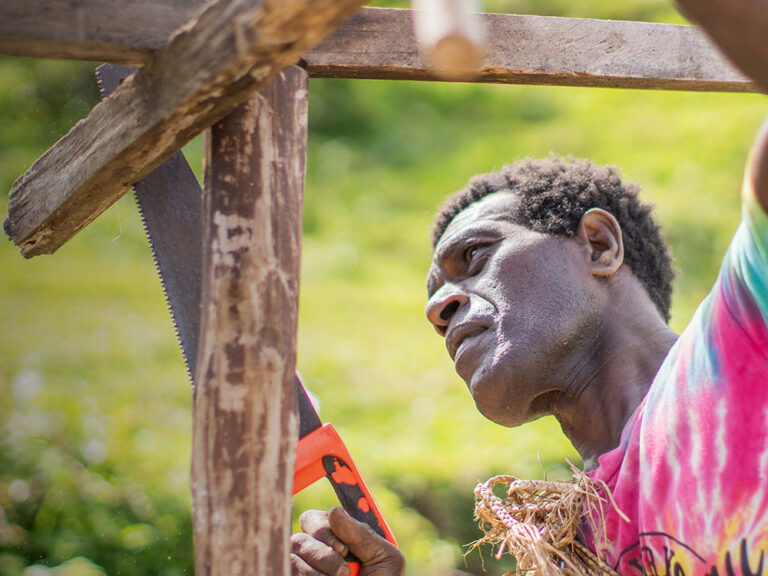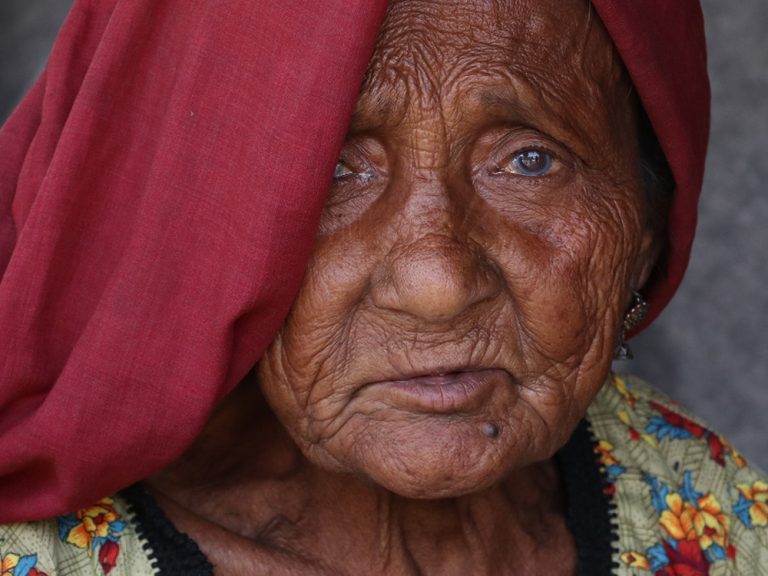In the aftermath of a disaster, many are left with nothing — no means to rebuild their homes, grow food, or make a living.
Where appropriate, cash assistance empowers people impacted by disaster, giving them the control and resources needed for their own recovery.
Each disaster and its impact are unique, and our responses are too.
Shelter materials like tents, tarpaulins, and tools are key to our disaster responses. However, when it’s clear cash can have a bigger impact, that’s what we’ll provide.
How can cash help people recover?
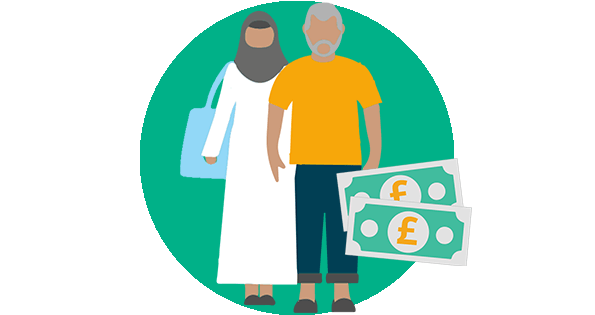
Cash helps people buy what they need to rebuild
What families need to fix their home may differ from one another. If there are materials that aren’t part of our shelter offer, it can be easier for people to buy what they need themselves. They can also pay for local tradespeople to begin building work where it’s needed. People might also choose to cover the costs of essentials such as food and medicine, and restart livelihoods and education for children.

Cash helps kickstart local economies
Providing cash means that suppliers and tradespeople can start doing business again. That’s a vital step towards a whole community beginning to recover. It can also be used to pay rent for a temporary place to live.
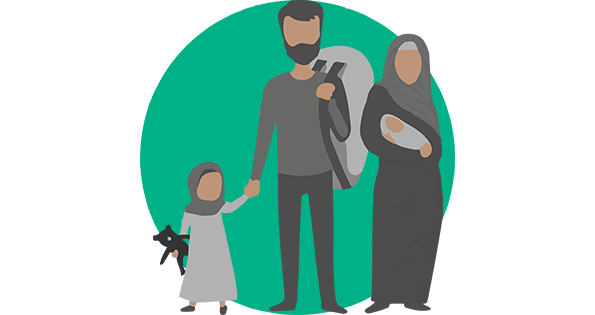
Cash helps people feel a sense of dignity
When your world has been thrown into chaos, having control and choice over your own recovery can restore self-esteem. Cash gives people flexibility and choice.
Our impact: Cash assistance in action
ShelterBox has led the way in integrating cash assistance into our disaster responses, adapting to the specific needs of each situation:
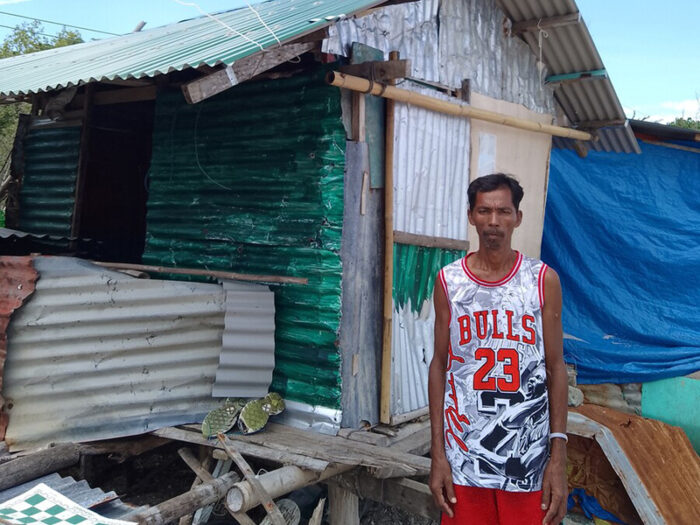

2020: Typhoon Tisoy, Philippines
We first introduced cash assistance here, alongside providing essential shelter materials and training. This allowed families to hire specialised labour and purchase materials like wood to rebuild their homes. Following the success of this pilot project in the Philippines, and another in Cameroon, we expanded cash assistance in our support packages.
2022: Typhoon Rai


2022: Conflict in Ukraine
Cash assistance helped displaced people cover vital needs such as food, transport, accommodation, and essential items.
Valentina’s story
Like many others, Valentina fled from the conflict in Ukraine into Moldova. In April 2022, she received ShelterBox cash assistance to help with the financial burden of being displaced. When asked what she would spend it on, Valentina said,
“Medicine. I live only due to the medicine, it’s the same with my husband… Medicine and food, that’s it, we don’t need anything else. We have shoes and clothes. Our wardrobe is full of clothes at home.”
Learn more about our response to the Ukraine crisis here.
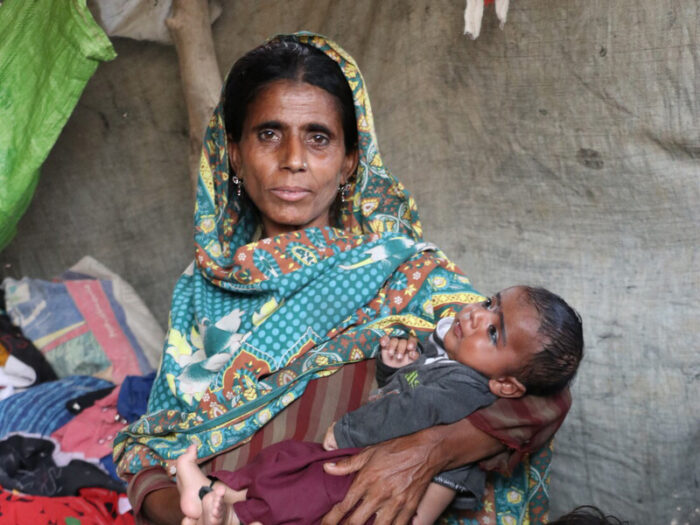

2023: Flooding in Pakistan
Cash played a crucial role, enabling families to meet immediate needs and begin recovery .
Ghulam’s story
Ghulam and her family lost her home, possessions and livestock when floods hit her village in Pakistan. For Ghulam, cash assistance from ShelterBox enabled her to help look after her family and create a livelihood.
“We needed food to eat for our family, along with that, clothes to wear in the extreme winters. We took a loan from someone and repaid it with the cash grant.
I got a hand pump installed in my home for my daughters as they had to walk miles alone to drink water which was unsafe…We also bought goats, as we lost all of them in the floods. We will use the goats we have now to start a business and meet our needs.”
Learn more about our work in Pakistan.


2024: Monsoon Flooding in Bangladesh
Partnering with Uttaran, we provided building materials and £24 per household. Families used the cash to transport materials and hire local tradespeople.


2024: Heavy Rainfall in Malawi
We provided shelter materials and essential household items in Malawi. Affected families received around £100 in cash to support shelter needs, ensuring homes stayed watertight.
ShelterBox’s adaptive approach, prioritising needs, ensures effective support. Cash assistance empowers communities to take control of their recovery and rebuild stronger, safer homes.
Cash assistance – frequently asked questions
We provide cash when it’s clear it’ll support people after disaster to improve their shelters and when the local conditions are right. That means we check there are materials and services available to buy locally and that the businesses that sell them are still operating. And it means we check that money can be transferred safely and easily where we’re working.
That depends on local conditions.
We might distribute money directly to people who have lost their homes. We might build links with financial companies that can provide a money transfer service to the people we support. Or, if mobile phones are widely used, we might transfer cash directly using mobile wallet apps.
In every situation, we consider all the options and do what’s easiest and safest for the people we support families.
The amount will vary from one response to the next, depending on the wide variety of circumstances that each disaster brings. It could be up to a few hundred pounds.
We coordinate with other humanitarian organisations to make sure that the amount does not vary too much. This helps to avoid creating tensions within local communities.
We take into account what is available to buy locally, what might be available in the future, and what those items and services cost.
That’s why we talk to local partners, communities, and authorities to understand local conditions before deciding if cash assistance is needed and how much to give.
Yes! Giving cash assistance alongside other types of aid is increasingly recognised and used by humanitarian charities as an effective way of supporting people that need it.
There have been many studies, projects and case studies to look at the impact. The results have been very positive.
It puts those who need help at the centre of humanitarian work; enabling people to get the support they need as quickly and practically as possible.
After distributing cash assistance, we will contact people who have been supported to make sure they’ve been able to buy what they needed. And, as with everything we do, we’ll keep evaluating the impact of cash assistance to make sure it’s making the biggest possible difference.
We also work closely with the people we support to make sure all items and services they buy are ethically sourced and protect the local environment.
We learned from our own experiences and from successful projects around the world that using cash assistance along with other aid and training can help communities rebuild better. It also means that people have control over their own recovery.
We carefully evaluate all our work to make sure it’s having the best possible impact on people’s lives. With cash assistance, we evaluate whether the amount was enough to buy what people needed, whether people were happy with the process and whether the items needed were available. If issues arise like local prices increase, we look carefully at that too, so we can keep learning and improving future responses.
As with everything we do, we continue to evaluate the impact of cash assistance to make sure it’s making the biggest possible difference.

